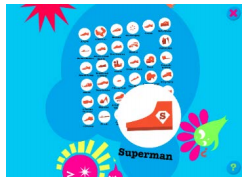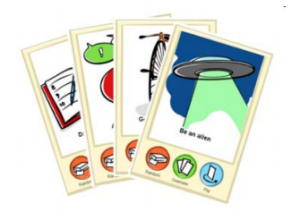Take A Different Perspective/OG
| Take A Different Perspective | |
| Contributors | Christian Kohls |
|---|---|
| Last modification | May 17, 2017 |
| Source | Kohls (2015)[1] |
| Pattern formats | OPR Alexandrian |
| Usability | |
| Learning domain | |
| Stakeholders | |
Context
You have already a clear vision of your problem or maybe even your solution. If you have an existing product you can clearly see what it is. Yet you don’t see all the opportunities!
Problem
Looking at a concept we often believe that what we see is true. However, looking straight at something only provides us one view. By staring at a problem or admiring an existing solution, we cannot see novel sides of the concept. Any form may have hidden aspects, challenges and opportunities.
Forces
Changing the context of a thing will change its meaning. A lion is the king of the jungle but will hardly survive at the North Pole.
A thing can have hundred different meanings but the mind can only focus on one. You know these optical illusions where two or more shapes can be seen in the same image but one can only see one at a time. The same is true for all other shapes and forms. There might be many different interpretations, and we may access them all, but we can only focus on one at a time.
Solution
Therefore, look at your problems and solutions with different eyes.
- Change to different perspectives and consider your ideas and problems through different lenses.
- You can reframe your problem or solution by asking different questions or putting them into different contexts.
- Create a list of contexts and perspective in a brainstorming or randomly pick new contexts.
- Try out many different ways of altering the perspective and systematically switch to the different perspectives.
- Write down the new aspects that you discover from the different views.
Example
Switch roles: Be empathic with end users and play role games in order to understand how they would use your product, service or document. Be empathic with investors – how would they feel about your decisions? Be empathic with environmentalists – would they be happy about your product’s sustainability?
How would others approach the problem: What would aliens do? What would superman do? What would Steve Job have done? What would elephants do?
Inverse your goals: instead of minimizing your expenses, try to expand them. Then you think about the best ways to waste money. If you have a list of money wasters then you can solve your original problem of minimizing expenses more easily because by now you know where the money is wasted. What about minimizing the customer base instead of maximizing? This could trigger thoughts about having a product or service that is very exclusive and you make scarcity of your offerings a competitive advantage.
Use the solution in other contexts: Can you think how other people might use the product? How would a young person use a product, how an old person? How is it used by one person, how by 10,000? If you are using a pen at the moment to highlight or comment some sections that you are reading, think about this: What meanings does a pen have when you are reading a book, writing a diary, writing a letter, signing a check, drawing a map? What if you use a pen for playing billiard?
Be the problem: Look at the world with the eyes of your design challenge. Be the problem. Be a potential solution. If you want to design a new mug think as if you were mug. What features would you like to have? What treatment do you deserve? The mug sits down with its own helping of coffee and thinks: “I want to be used frequently and with care. Please clean me on a regular base. I want to make a statement. I want to be robust. I want to make others comfortable. I like to dress differently every day. I want to stand out on a cupboard. I want to be valued. I am the protector of the hot beverage.” Set yourself an Idea Quota (Idea Quota) and write down another 25 thoughts of a coffee mug. Select one and explore it in more detail. For example “I like to dress differently every day” makes you think of mugs that change their color according to temperature. You could also think of mugs that indicate weather conditions, show you the day of the week or have a quote of the day.
Supporting Tools
Consequences
Different questions lead to different answers. Meaning is unfolded in the context of a question. Programmers know this: the same code of numbers can have very different meanings depending on the program that interprets it: 221, 21, 40 could be a color, a sequence of steps, a phone number, anything! By looking at things in different ways, new properties and opportunities will be discovered. Hidden problems can be identified.
Children are very good at seeing all kinds of things in a simple object. For them an old shoe box could be a sales counter, a house for puppets, a car, a stage for magic and many things more. Looking at things differently means they are different. However, we have often lost this ability to look at things open minded, as we have been trained to put things into the right category. While it is a benefit to see things as what they are, we should not forget that everything in the world can have different meanings, and one thing can be many things depending on the way you look at it.
References
- ↑ Kohls, C. (2015). Patterns for creative thinking: idea generation. In Proceedings of the 20th European Conference on Pattern Languages of Programs (EuroPLoP 2015) (p. 30). New York:ACM.

